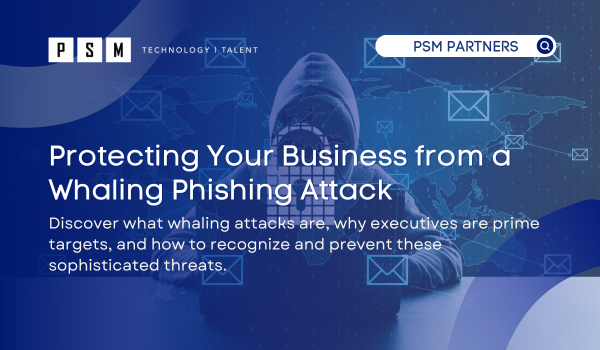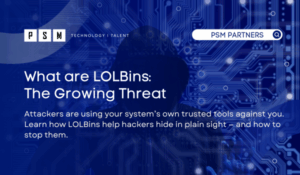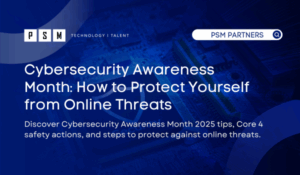Table of Contents
ToggleIn today’s digital landscape, whaling phishing attacks have emerged as one of the most sophisticated and dangerous forms of cybercrime. Often referred to as CEO fraud, whaling specifically targets high-level executives within organizations, leveraging their positions of authority and access to sensitive information. Unlike standard phishing attacks, which cast a wide net, whaling is highly targeted, using meticulously crafted emails and fraudulent communications to deceive key individuals at an organization. Whale phishing is a sophisticated attack that specifically targets high-level executives, often masquerading as trusted figures to deceive employees. This type of attack poses a significant threat, as it can lead to substantial financial loss and data breaches. Understanding the nature of whaling attacks, recognizing their signs, and implementing effective protective measures are crucial for safeguarding your business against these targeted threats.
What is a Whaling Phishing Attack?

Whaling is a type of spear-phishing attack that specifically targets high-level executives within an organization, employing social engineering tactics to deceive them. Unlike standard phishing, which indiscriminately targets a broad audience, whaling attacks focus on key individuals, often pretending to be a senior employee or another trusted entity within the company. Attackers use sophisticated methods like email and website spoofing to deceive their targets, encouraging them to either send a wire transfer to a fraudulent account or share sensitive information. The fraudulent communication appears to come from someone influential within the organization, making it more convincing and dangerous. This tactic highlights the importance of vigilance at all levels of a company, especially among those in leadership positions.
How Whaling Attacks Deceive and Exploit Their Targets
Whaling phishing attacks typically begin with an email that appears to come from a trusted source, such as a partner, vendor, or customer account. The email is crafted with enough personal details to convince the recipient of its legitimacy. Often, the message will include a malicious link to a spoofed site that closely resembles the real one. Once the victim clicks the link, attackers can collect sensitive information or install malware. Victims may be prompted to share critical details like payroll information, tax returns, bank account numbers, or even authorize a wire transfer. The ultimate goal of these attacks is to steal money, sensitive data, or gain access to networks, leading to even more significant financial or informational breaches.
Why Executives Are Prime Targets for Whaling Attacks
Executives are particularly vulnerable to whaling phishing attacks because hackers leverage social engineering techniques to deceive them into divulging personal information or clicking on malicious links. Unlike standard phishing attacks, whaling is more challenging to detect as it often avoids using obvious indicators like malicious URLs or weaponized attachments. Instead, these attacks rely on highly personalized and convincing communication, crafted with detailed knowledge of the executive’s role, responsibilities, and connections within the company. Executives are prime targets because of their access to sensitive information and their authority to approve high-value transactions, making a successful attack potentially devastating to the organization. The pressure and fast-paced nature of their roles can also lead to less scrutiny of requests that appear urgent, further increasing their vulnerability to these sophisticated scams.
Examples of Whaling Attacks
Whaling attacks can take various forms, each designed to exploit the trust and authority associated with high-level executives. One common tactic is setting up a fake meeting invitation, disguised as a Zoom or Teams link, that actually contains malware. Another example is when attackers request payroll information about current or past employees, posing as a legitimate internal or external entity. A more sophisticated approach involves intercepting an unencrypted email conversation to divert a large bank transfer, redirecting the funds to a fraudulent account. These examples highlight the diverse and dangerous methods hackers use to manipulate executives and gain access to valuable assets.
Spotting the Subtle Signs of a Whaling Attack
Identifying a whaling attack is more challenging than recognizing a standard phishing attempt because attackers invest significant time in making their email communications appear legitimate. However, there are subtle signs to watch for. One red flag is a slight mismatch in the domain name, such as substituting an “m” with “rn” to deceive the recipient. Additionally, be cautious of any requests to share sensitive information or wire money, especially if the message conveys a sense of urgency or implies consequences if the action isn’t performed immediately. These tactics are designed to pressure the recipient into acting quickly without verifying the request, making vigilance essential in spotting potential whaling attacks.
How to Protect Yourself from Whaling Attacks
Whaling attacks target high-level executives with sophisticated phishing schemes designed to compromise sensitive information. To safeguard against these threats, it’s crucial to implement a comprehensive security strategy. By combining technical solutions with user education, you can significantly lower your risk. Here are some essential steps to bolster your protection:
- Use Strong Anti-Spam and Anti-Malware Programs: Block malicious emails and detect harmful software.
- Implement DNS Authentication Services: Employ DMARC, DKIM, and SPF protocols to verify the authenticity of domain names.
- Employ Email Scanning and Filtering Technology: Analyze links and attachments to identify and block suspicious content.
- Deploy Anti-Impersonation Software: Detect common social engineering tactics used in whaling attacks.
- Implement and Enforce Strong Financial Controls: Update your business processes for sensitive financial activities such as wire transfers to ensure proper oversight and checks and balances are in place to avoid falling victim to financial fraud.
- Provide Security Awareness Training: Equip users with the skills to recognize and respond to suspicious communications.
Protecting against a whaling phishing attack begins with educating critical personnel within your organization, ensuring they remain consistently vigilant about potential threats. It’s important to foster a culture of cautious scrutiny among key staff, particularly when dealing with unexpected communications, especially those involving sensitive information or financial matters. Encourage them to always question whether they were anticipating the email, attachment, or link and to consider if the request deviates from the norm in any way.
Additionally, executives should be particularly cautious about the information they share on social media platforms such as Facebook, Twitter, and LinkedIn. Personal details like birthdays, hobbies, holidays, job titles, promotions, and relationships can be exploited by cybercriminals to craft more sophisticated and targeted attacks. By staying vigilant and informed, you can better protect yourself and your organization from these evolving threats.
How to Report a Whaling Attack
- Alert Your Employer and IT Department: Immediately notify your employer and its IT department if you suspect or have experienced a whaling attack. This allows them to block any further attempts from the hacker and mitigate potential damage.
- Report to Relevant Authorities: You can also report the attack to the Federal Trade Commission, the Cybersecurity and Infrastructure Agency, and the Anti-Phishing Working Group. These organizations can help track and prevent cybercrime, contributing to broader efforts to combat such threats.
Fortify Your IT Infrastructure with PSM Partners’ Cybersecurity Solutions
No matter the size or type of your business, safeguarding your IT infrastructure from external threats is crucial. Data breaches, malware, and other cyber issues can lead to stolen information or locked systems, causing significant disruptions. At PSM Partners, we prioritize the security of your IT environment with tailored cybersecurity solutions designed to prevent whaling attacks and other sophisticated threats. Our team of experts provides comprehensive protection through advanced anti-spam and anti-malware measures, robust DNS authentication, and proactive email scanning. We also offer targeted security awareness training to empower your staff. By partnering with PSM Partners, you ensure that your organization’s IT systems are fortified against potential breaches, allowing you to focus on your mission with confidence.
Related Insights
What are LOLBins: The Growing Threat
Cybercriminals are becoming increasingly clever at turning everyday tools into...
Read MoreUpcoming Cybersecurity Events in 2026
As technology continues to evolve at a rapid pace, staying...
Read MoreCybersecurity Awareness Month: How to Protect Yourself from Online Threats
Every October, Cybersecurity Awareness Month serves as a reminder of...
Read MoreCybersecurity Trends in Higher Education: What Colleges and Universities Need to Know
Key Takeaways: Your Cybersecurity Questions Answered Higher Education Is Now...
Read MoreAbout the Author

Marisa Maiella
I'm a dynamic Marketing Coordinator with a passion for crafting compelling marketing campaigns and engaging content. Known for my creativity and strategic approach, I am committed to fostering brand growth and enhancing engagement through innovative marketing strategies.





